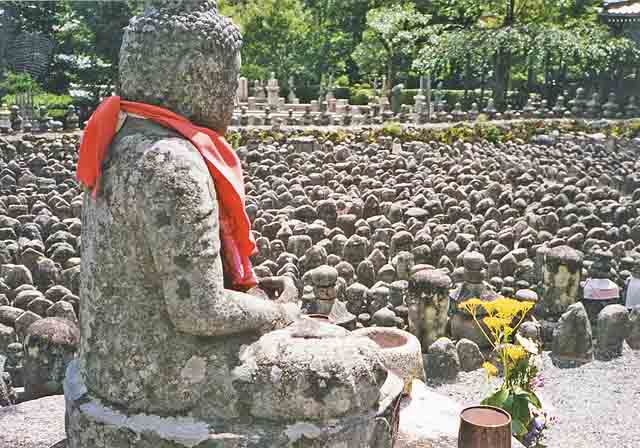










|
||
Kyoto (京都 Kyōto) (Japanese pronunciation: [kjoːto] ( Although archaeological evidence places the first human settlement on the islands of Japan to approximately 10,000 BC, relatively little is known about human activity in the area before the 6th century AD. During the 8th century, when the powerful Buddhist clergy became involved in the affairs of the Imperial government, the Emperor chose to relocate the capital to a region far from the Buddhist influence. Emperor Kammu selected the village of Uda, at the time in the Kadono district of Yamashiro Province, for this honor.[1] The new city, Heian-kyō (平安京 "tranquility and peace capital"), became the seat of Japan's imperial court in 794, beginning the Heian period of Japanese history, named after Chinese word for capital city, jingdu (京都). In Japanese, the city has been called Kyo (京), Miyako (都) or Kyo no Miyako (京の都). In the 11th century, the city was renamed Kyoto ("capital city").[2] Kyoto remained Japan's capital until the transfer of the government to Edo in 1868 at the time of the Imperial Restoration. (Some believe that it is still a legal capital: see Capital of Japan.) After Edo was renamed Tokyo (meaning "Eastern Capital"), Kyoto was known for a short time as Saikyo (西京 Saikyō, meaning "Western Capital"). An obsolete spelling for the city's name is Kioto; it was formerly known to the West as Meaco or Miako (Japanese: 都; miyako, meaning "the seat of Imperial palace" or "capital".). Another term commonly used to refer to the city in the pre-modern period was Keishi (京師), meaning "metropolis" or "capital". The city suffered extensive destruction in the Ōnin War of 1467-1477, and did not really recover until the mid-16th century. Battles between samurai factions spilled into the streets, and came to involve the court nobility (kuge) and religious factions as well. Nobles' mansions were transformed into fortresses, deep trenches dug throughout the city for defense and as firebreaks, and numerous buildings burned. The city has not seen such widespread destruction since. There was some consideration by the United States of targeting Kyoto with an atomic bomb at the end of World War II because, as an intellectual center of Japan, it had a population "better able to appreciate the significance of the weapon." [3] In the end it was decided to remove the city from the list of targets due to the insistence of Henry L. Stimson, Secretary of War in the Roosevelt and Truman administrations. The city was largely spared from conventional bombing as well, although small-scale air raids did result in casualties. As a result, Kyoto is one of the few Japanese cities that still has an abundance of prewar buildings, such as the traditional townhouses known as machiya. However, modernization is continually breaking down the traditional Kyoto in favor of newer architecture, such as the Kyoto Station complex. Kyoto became a city designated by government ordinance on September 1, 1956. In 1997, Kyoto hosted the conference that resulted in the protocol on greenhouse gas emissions that bears the city's name. Historically Kyoto was the largest city in Japan, later surpassed by Osaka and Edo (Tokyo) towards the end of the 16th century. In the prewar years, Kyoto traded places with Kobe and Nagoya ranking as the 4th and 5th largest city. In 1947, it went back to being 3rd, but its population has gradually declined ever since. By 1960 it had fallen to 5th again, and by 1990 it had fallen to 7th. If current trends continue it could fall to 9th after Fukuoka and Kawasaki.[4] |
This article is about the female Japanese entertainer. For the Chinese elm variety, see Ulmus parvifolia 'Geisha'.
"Geiko" redirects here. For the insurance company, see GEICO.

Typical nape make-up on a Maiko (Note the red collar)Geisha (芸者), Geiko (芸子) or Geigi (芸妓) are traditional, female Japanese entertainers whose skills include performing various Japanese arts such as classical music and dance. Heian period in Kyoto (794-1229)
|
|

